#TEchnology
Explore tagged Tumblr posts
Text
I swear to fucking god. I would claw out OneDrive from my computer if I could. I would burn down their servers if I could. I would run down their stocks to the ground if I could. I hope every single one of their workers gets a better offer from a competitor in the next 24 hours. I hope every single one of their light bulbs explodes at the same time. I hope every single carton of milk in their fridge will always be expired.
Stop backing up my fucking files.
Stop asking me to back up my fucking files.
Stop taking my fucking files off my fucking computer.
I don't want a fucking reminder in three fucking days. Let me fucking say no.
Fuckers.
#now it's doing this shit again and i have to wait until it copies all of my fucking files before i can stop this shit and copy them back to#my fucking computer#onedrive#microsoft#technology
37K notes
·
View notes
Text
Cosmic Dawn through Her Lens: Sophia Roberts
If you’ve seen video footage of the James Webb Space Telescope, there’s a good chance you’ve seen it through her lens.
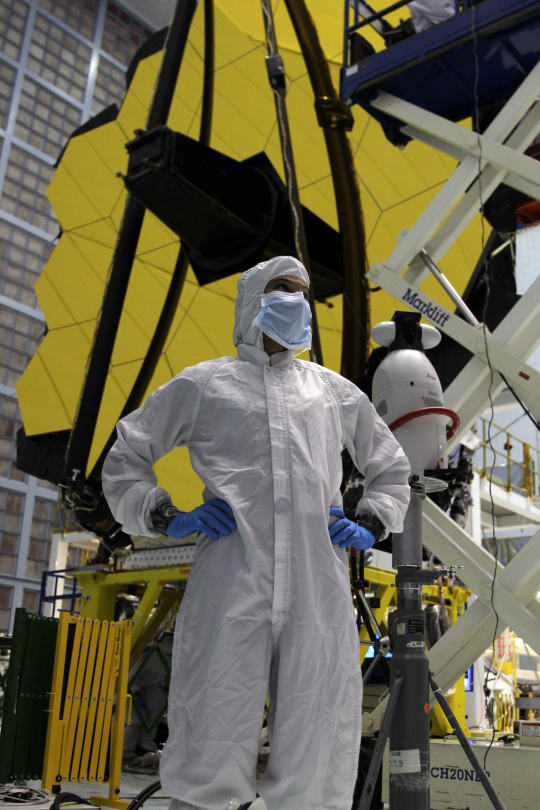
Sophia Roberts is an astrophysics video producer at NASA Goddard in Maryland. She spent years chasing Webb around the country as one of its primary videographers, documenting its construction and crafting stories that explained why Webb was worth building.
“There were countless potential points of failure. It was up to the communications team to acknowledge those risks honestly and help the public understand why the mission still mattered,” she said.

Sophia’s incredible efforts included capturing hours-long timelapses of major operations, filming inside clean rooms (special facilities where space mission components are assembled and tested), and editing these moments together, bringing the public on Webb’s journey with her. Sophia also tracked down the origins of many of the elements used to create Webb. She was even able to visit and film a beryllium mine, home to the rare metal from which Webb’s mirrors originated.
“Seeing this raw, elemental starting point for something as refined as a space telescope was unforgettable,” Sophia said.

What kept her going was her own curiosity, wondering: Why are the mirrors exposed? Why are they gold? What makes beryllium special? Why is the radiator black?
When Webb was transported via boat from the Port of Los Angeles to French Guiana (the telescope was too heavy to travel by bridge and too large for a plane), Sophia was there too! She rented a chase boat to follow Webb and film its journey.
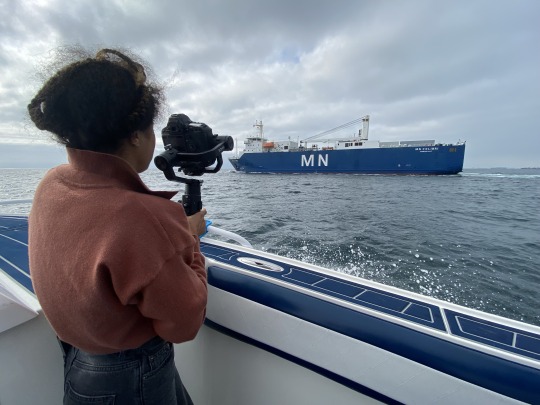
“Chasing Webb down the California coast at full speed felt like an action movie; and it was the last time we’d ever see it on U.S. soil,” she said.
Leading up to the telescope’s launch, the necessary work became more and more intense…and then launch! and it was done. It took a while to shake the “void” that the job had left behind.
Sophia and her team won several Webbys for their work, recognizing them for their social media campaigns, live broadcasts covering the launch, deployment, and first images, as well as a short film called 29 Days on the Edge, diving into the arduous process of unfolding Webb in space over a month after launch.
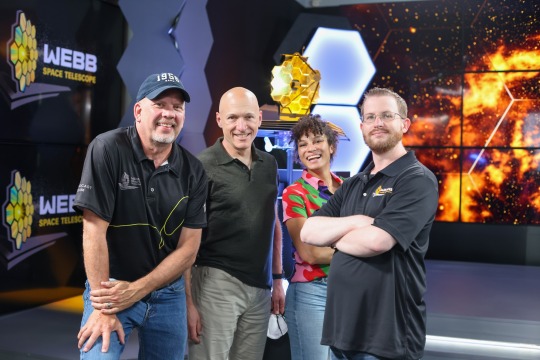
Sophia is one of the stars of our newest NASA+ documentary, Cosmic Dawn, which takes you behind the scenes of the world’s most powerful space telescope. See the story through her lens: https://www.nasa.gov/cosmicdawn/.
Make sure to follow us on Tumblr for your regular dose of space!
#NASA#James Webb Space Telescope#astrophotography#film#documentary#space#telescope#technology#tech#astrophysics#photography
617 notes
·
View notes
Text
Technology transparent PNGs
free 2 use
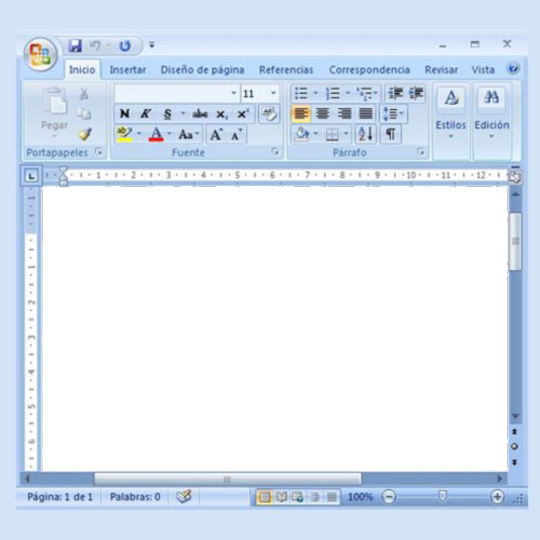
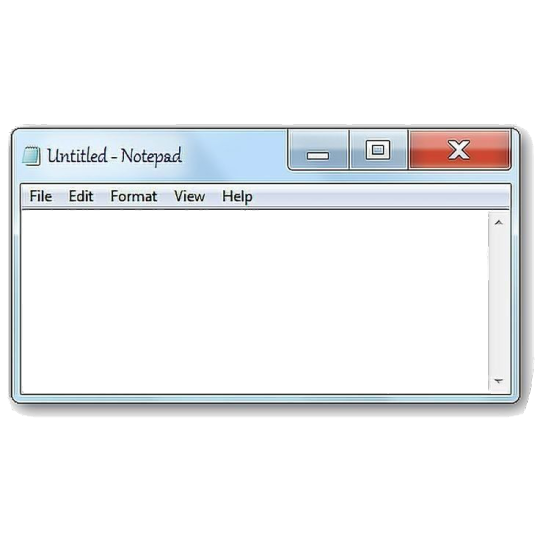

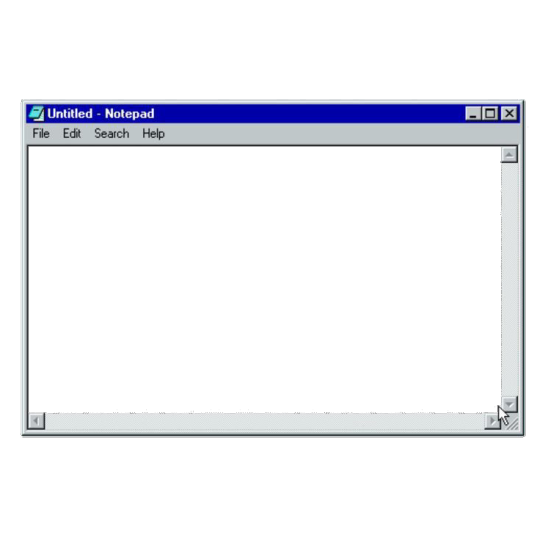



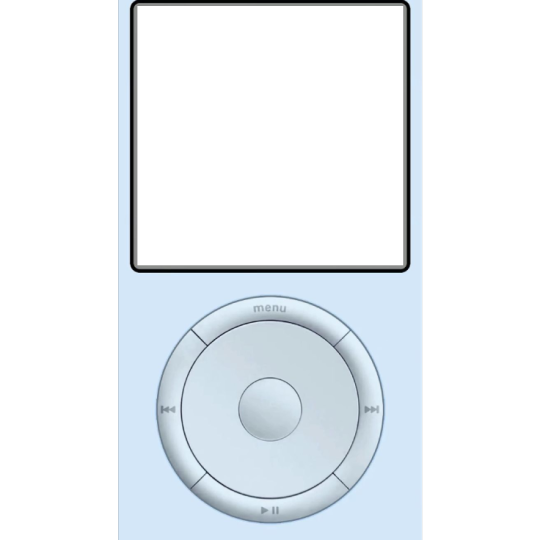
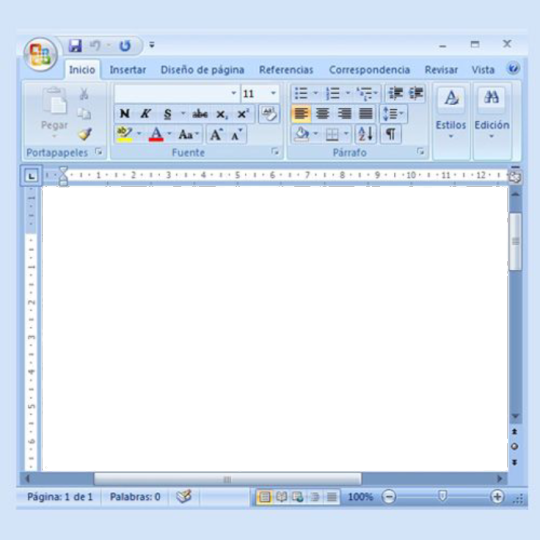



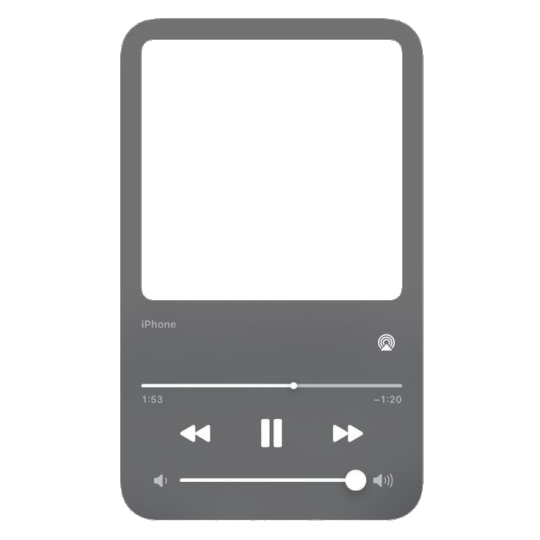
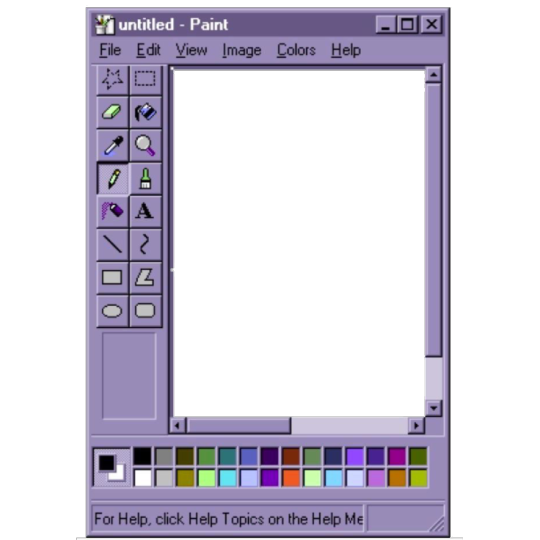
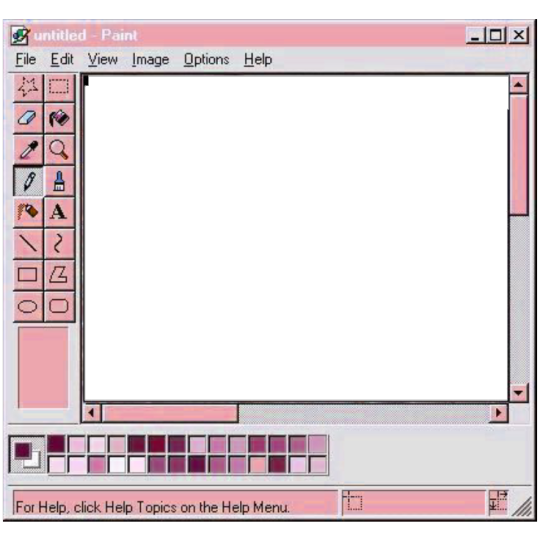

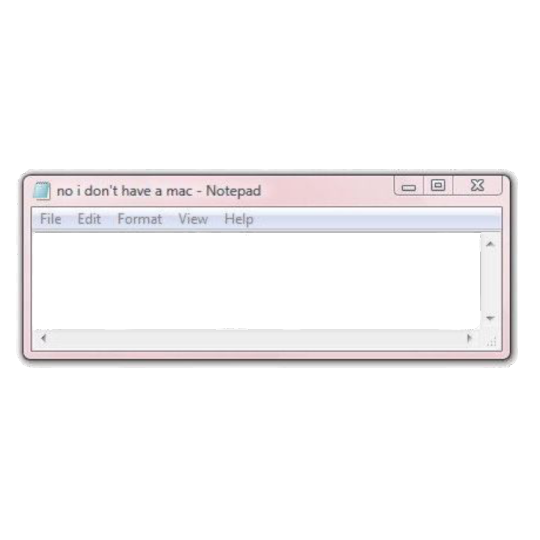
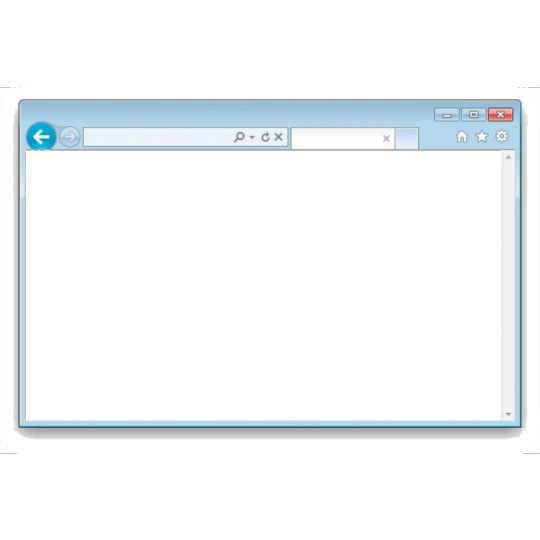
#tech#transparent png#png#transparent pngs#random pngs#pink png#blue pngs#technology#techcore#webcore#cute pngs#png dump#transparent#aesthetic
32K notes
·
View notes
Text

More circuit board-inspired pieces because I love them so! I made this carafe and cup set out of black porcelain, and the red design is inlaid into a hand-carved design (rather than painted on), using a traditional ceramics technique called mishima.
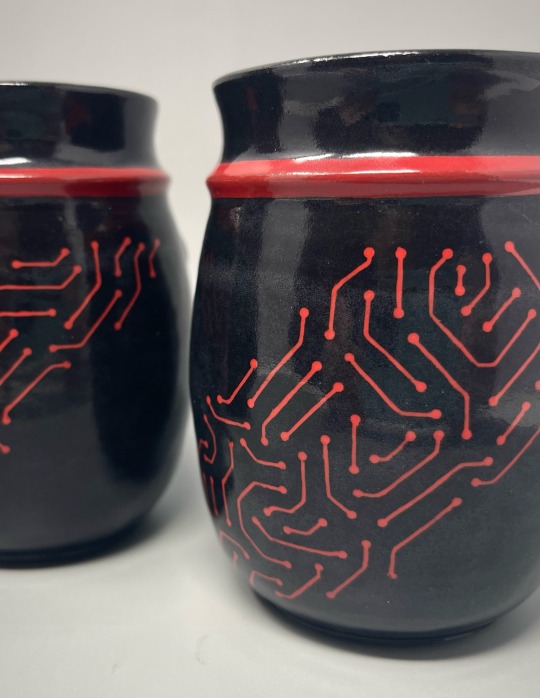
#pottery#ceramics#my art#artists on tumblr#ceramic art#sci fi art#circuit board#technology#ceramic#wheel thrown pottery#art#I made this while doing a full rewatch of all the Star Wars movies which is maybe why it’s sith-coded
650 notes
·
View notes
Text
Grok 4 Just Broke the Internet — Elon’s Team Drops Demos That Leave Builders Stunned
Grok 4 Just Broke the Internet — Elon’s Team Drops Demos That Leave Builders Stunned In a stunning display of technological prowess, Elon Musk’s xAI team has unleashed Grok 4, and the internet can’t stop talking about it. Builders, developers, and researchers are collectively losing their minds — and for good reason. This is not just another language model. Grok 4 is the first AI model to…

View On WordPress
#AI#Article#Artificial Intelligence#Blog#Blogger#Bloggers#Blogging#Blogpost#Elon Musk#Grok4#Grok4w#Information Technology#Inspiring#Technology#Writer
8 notes
·
View notes
Text

#technology#tech#lgbtq#lgbtqia#lgbt#trans#transgender#twitter#tweets#memes#meme#funny#lol#lmao#humor#mostly-funnytwittertweets
18K notes
·
View notes
Text
In order to plan and perform operations easier, New York surgeons have shown an augmented reality device that helps them in their work. The program in AR glasses converts images (MRI, CT, and more) into interactive 3D diagrams that are superimposed on the patient's body in real time.
548 notes
·
View notes
Text
#okay TO BE FAIR#this didnt just happen out of nowhere#the various mining industries actively campaign for people to think of synthetic jewels as 'fake'#on par with glass substitutions#like this has been a deliberate effort so they can keep their stranglehold on the industry its not just People Being Mean For No Reason#i mean i just googled it and like the first article was just this year#the american gem trade association banned synthetics from their trade shows#and giving a very 'well i GUESS you can sell them outside the shows as long as you make sure everyone knows theyre synthetic' statement#citing that people needed ''peace of mind'' that they were getting ''natural'' gems#and going on about how synthetics are super damaging to the economy in the countries that produce a lot of gems by mining#as if the mining itself isnt super fucking dangerous and damaging to the environment#thats not an accident. that is propaganda and big planet- and people- killing industries throwing their weight around#to try to kill the new tech that threatens them (via @bananonbinary)
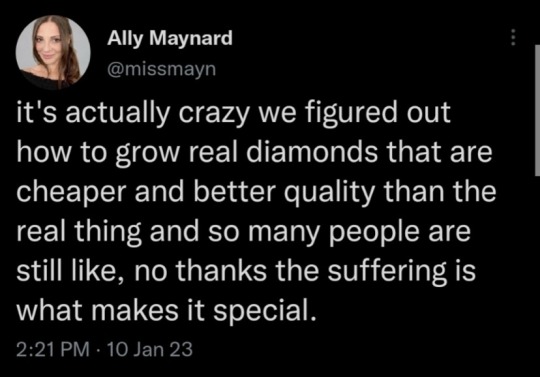
14K notes
·
View notes
Text

What We Learned from Flying a Helicopter on Mars
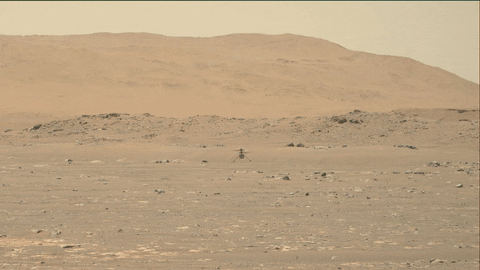
The Ingenuity Mars Helicopter made history – not only as the first aircraft to perform powered, controlled flight on another world – but also for exceeding expectations, pushing the limits, and setting the stage for future NASA aerial exploration of other worlds.
Built as a technology demonstration designed to perform up to five experimental test flights over 30 days, Ingenuity performed flight operations from the Martian surface for almost three years. The helicopter ended its mission on Jan. 25, 2024, after sustaining damage to its rotor blades during its 72nd flight.
So, what did we learn from this small but mighty helicopter?
We can fly rotorcraft in the thin atmosphere of other planets.
Ingenuity proved that powered, controlled flight is possible on other worlds when it took to the Martian skies for the first time on April 19, 2021.
Flying on planets like Mars is no easy feat: The Red Planet has a significantly lower gravity – one-third that of Earth’s – and an extremely thin atmosphere, with only 1% the pressure at the surface compared to our planet. This means there are relatively few air molecules with which Ingenuity’s two 4-foot-wide (1.2-meter-wide) rotor blades can interact to achieve flight.
Ingenuity performed several flights dedicated to understanding key aerodynamic effects and how they interact with the structure and control system of the helicopter, providing us with a treasure-trove of data on how aircraft fly in the Martian atmosphere.
Now, we can use this knowledge to directly improve performance and reduce risk on future planetary aerial vehicles.
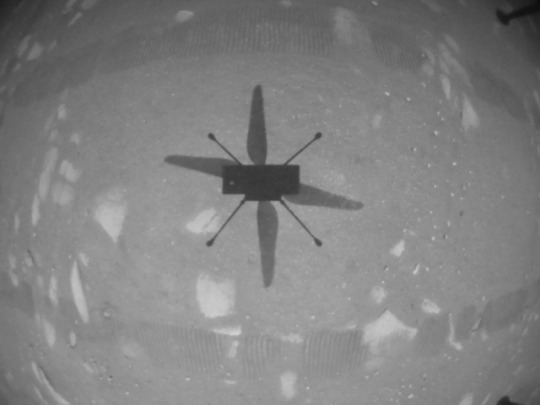
Creative solutions and “ingenuity” kept the helicopter flying longer than expected.
Over an extended mission that lasted for almost 1,000 Martian days (more than 33 times longer than originally planned), Ingenuity was upgraded with the ability to autonomously choose landing sites in treacherous terrain, dealt with a dead sensor, dusted itself off after dust storms, operated from 48 different airfields, performed three emergency landings, and survived a frigid Martian winter.
Fun fact: To keep costs low, the helicopter contained many off-the-shelf-commercial parts from the smartphone industry - parts that had never been tested in deep space. Those parts also surpassed expectations, proving durable throughout Ingenuity’s extended mission, and can inform future budget-conscious hardware solutions.

There is value in adding an aerial dimension to interplanetary surface missions.
Ingenuity traveled to Mars on the belly of the Perseverance rover, which served as the communications relay for Ingenuity and, therefore, was its constant companion. The helicopter also proved itself a helpful scout to the rover.
After its initial five flights in 2021, Ingenuity transitioned to an “operations demonstration,” serving as Perseverance’s eyes in the sky as it scouted science targets, potential rover routes, and inaccessible features, while also capturing stereo images for digital elevation maps.
Airborne assets like Ingenuity unlock a new dimension of exploration on Mars that we did not yet have – providing more pixels per meter of resolution for imaging than an orbiter and exploring locations a rover cannot reach.
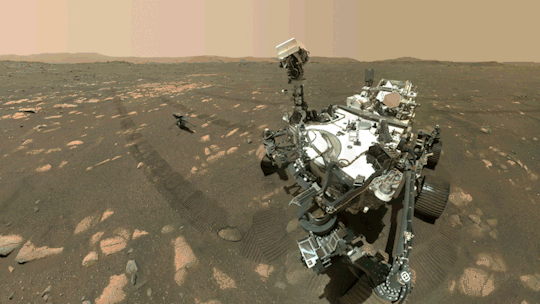
Tech demos can pay off big time.
Ingenuity was flown as a technology demonstration payload on the Mars 2020 mission, and was a high risk, high reward, low-cost endeavor that paid off big. The data collected by the helicopter will be analyzed for years to come and will benefit future Mars and other planetary missions.
Just as the Sojourner rover led to the MER-class (Spirit and Opportunity) rovers, and the MSL-class (Curiosity and Perseverance) rovers, the team believes Ingenuity’s success will lead to future fleets of aircraft at Mars.
In general, NASA’s Technology Demonstration Missions test and advance new technologies, and then transition those capabilities to NASA missions, industry, and other government agencies. Chosen technologies are thoroughly ground- and flight-tested in relevant operating environments — reducing risks to future flight missions, gaining operational heritage and continuing NASA’s long history as a technological leader.
youtube
You can fall in love with robots on another planet.
Following in the tracks of beloved Martian rovers, the Ingenuity Mars Helicopter built up a worldwide fanbase. The Ingenuity team and public awaited every single flight with anticipation, awe, humor, and hope.
Check out #ThanksIngenuity on social media to see what’s been said about the helicopter’s accomplishments.
youtube
Learn more about Ingenuity’s accomplishments here. And make sure to follow us on Tumblr for your regular dose of space!
5K notes
·
View notes
Photo

1K notes
·
View notes
Text
ABACUSYNTH by ELIAS JARZOMBEK [2022]
Abacusynth is a synthesizer inspired by an abacus, the ancient counting tool used all around the world. Just like an abacus is used to learn the fundamentals of math, the Abacusynth can be used to explore the building blocks of audio synthesis.
#elias jarzombek#abacusynth#technology#instruments#synthesizer#innovation#abacus#contemporary art#music#video#u
11K notes
·
View notes
Photo

fully Crafted Consciousness - Nam June Paik's Reclining Buddha (1994)
#art#video art#installation#korean artist#contemporary#buddhist art#technology#nam june paik#sculpture
5K notes
·
View notes
Text
Semantic drift versus ethical drift

Support me this summer in the Clarion Write-A-Thon and help raise money for the Clarion Science Fiction and Fantasy Writers' Workshop! This summer, I'm writing The Reverse-Centaur's Guide to AI, a short book for Farrar, Straus and Giroux that explains how to be an effective AI critic.

More than a quarter-century ago, a group of hackers decided that, as a label, "free software" was a liability, and they set out to replace it with a different label, "open source," on the basis that "open source" was easier to understand and using it instead of "free software" would speed up adoption.
They were right. The switch from calling it "free software" to calling it "open source" sparked a massive, unbroken wave of adoption, to the point where today it's hard to find anyone who will profess enmity for "open source," not even Microsoft (who once called it "a cancer").
Two motives animated "open source" partisans: first, they didn't like the ambiguity of "free software." Famously, Richard Stallman (who coined "free software") viewed this ambiguity as a feature, not a bug. He liked that "free" had a double meaning: "free as in speech" (an ethical proposition) and "free as in beer" (without cost). Stallman viewed the ambiguity of "free software" as a koan/conversation-starter: a normie, hearing "free software," would inquire as to whether this meant that the software couldn't be sold commercially, which was an opening for free software advocates to explain the moral philosophy of software freedom.
For "open source" partisans, this was a bug, not a feature. They wanted to enlist other hackers to develop freely licensed codes, and convince their bosses to adopt this code for internal and public-facing use. For the "open source" advocates, a term designed to confuse was a liability, a way to turn off potential collaborators ("if you're explaining, you're losing").
But the "open source" side wasn't solely motivated by a desire to simplify things by jettisoning the requirement to conscript curious bystanders into a philosophical colloquy. Many of them also disagreed with the philosophy of free software. They weren't excited about building a "commons" or in preventing rent extraction by monopolistic firms. Some of them quite liked the idea of someday extracting their own rents.
For these "open source" advocates, the advantage of free software methodologies – publishing code for peer review and third-party improvement – was purely instrumental: it produced better code. Publication, peer review, and unrestricted follow-on innovation are practices firmly rooted in the Enlightenment, and are the foundation of the scientific method. Allowing strangers to look at your code, critique it, and fix it is a form of epistemic humility, an admission that we are all forever at risk of fooling ourselves, and it's only through adversarial peer review that we can know whether we are right.
This is true! Publishing code makes it better, and prohibitions on code publication make code worse. That's the lesson of the ransomware epidemics of the past decade: these started with a series of leaks from the NSA and CIA. Both agencies have an official policy of researching widely used software in hopes of finding exploitable bugs and then keeping those bugs secret, so that they will be preserved in the wild and can be exploited when the agencies wish to attack their enemies.
The name for this practice is NOBUS, which stands for "No One But US": we alone are smart enough to find these bugs, so if we discover them and keep them secret, no one else will find them and use them to attack our own people. This is a provably false proposition, and a very dangerous one.
The Vault 7, Vault 8, and NSA cyberweapon leaks blew a hole in NOBUS. Failures in the agencies' own security protocols resulted in the release of a long list of defects (mostly in versions of Windows, but other OSes and programs were affected). Malicious software authors used these as can openers to pry open millions of computers, enlisting them into botnets and/or shutting them down with ransomware.
These leaks also provided some "ground truth" for researchers who study malicious software. Once these researchers had a list of which defects the spy agencies had discovered and when, they were able to compare that list of defects that malicious software authors had discovered and exploited in the wild, and estimate the likelihood that a spy agency defect would be independently discovered and abused by the agency's enemies, who they were supposed to be protecting us from. It turns out that the rediscovery rate for spy agency bugs is about 20% per year – in other words, there's a one in five chance that a bug that the CIA or NSA is hoarding will be used to attack America and Americans within the year.
NOBUS is a form of software alchemy. Alchemy is the pre-Enlightenment version of scientific inquiry, and it resembles science in many respects: an alchemist observes phenomena in the natural world, hypothesizes a causal relationship to explain them, and performs an experiment to test their hypothesis. But here is where the resemblance ends: where the scientist must publish their results for them to count as science, the alchemists kept their findings to themselves. This meant that alchemists were able to trick themselves into thinking they were right, including about things they were very wrong about, like whether drinking mercury was a good idea. The failure to publish meant that every alchemist had to discover, for themself, that mercury was a deadly poison.
Alchemists never figured out how to transform lead into gold, but they did convert the base metal of superstition into the precious metal of science by putting it through the crucible of disclosure and peer-review. Both open source and free software partisans claim transparency as a key virtue of their system, because transparency leads to improvement ("with enough eyeballs, all bugs are shallow").
At the outset, "open source" and "free software" were synonyms. All code that was open was also free, and vice-versa. But over the ensuing decades, that changed, as Benjamin "Mako" Hill explained in his 2018 Libreplanet keynote, "How markets coopted free software’s most powerful weapon":
https://mako.cc/copyrighteous/libreplanet-2018-keynote
As Hill explains, the philosophical differences between "open" (making better code) and "free" (making code to enhance human freedom) may not have mattered at the outset, but they each served as a kind of pole star for its own adherents, leading them down increasingly divergent paths. Each new technology and practice represented a decision-point for the movement: "Is this something we should embrace as compatible with our project, or should we reject it as antithetical to our goals?" If you were an "open source" person, the question you asked yourself at each juncture was, "Does this new thing increase code-quality?" If you were a "free software" person, the question you had to answer was, "Does this make people more free?"
These value judgments carried enormous weight. They influenced whether hackers would work to improve a given package or pursue a use-case; they determined who would speak or exhibit at conferences, they created (or deflated) "buzz," and they influenced the direction that new license versions would take, and whether those licenses would be permissible on influential software distribution channels. For a movement that runs on goodwill as much as on dollars, the social acceptability of a practice, a license, a technology or a person, mattered.
Hill describes how chasing openness without regard to its consequences for freedom created a strange situation, one in which giant tech monopolists have software freedom, while the rest of us have to make do with open source. All the software that powers the cloud systems of Facebook, Google, Apple, Microsoft, etc, is freely licensed. You can download it from Github. You can inspect it to your heart's content. You can even do volunteer work to improve it.
But only Google, Apple, Microsoft and Facebook get to decide whether to run it, and how to configure it. And since nearly all the code our users depend on takes a loop through a Big Tech cloud, the decisions made by these Big Tech firms set the outer boundaries of what our code can do. They have total freedom while we make do with the crumbs they drop from on high.
In other words, the freedom mattered, and when we forgot about it, we lost it.
Which is not to say that free software doesn't benefit from open source's popularity. The vast cohort of people who have been won over by open source's instrumental claims to superior code are the top of a funnel that free software partisans can operate to convince these people to consider the ways that their lives have been made more free through open code, and to prioritize freedom, even ahead of code quality.
The free/open source movement is actually a coalition of people who share some goals even if they differ on others. Coalitions are politically powerful. Nearly everything that happens, happens because a coalition has been pulled together:
https://pluralistic.net/2025/01/06/how-the-sausage-gets-made/#governing-is-harder
But coalitions are also brittle, because after they get what they want (transparency for code), then they have to resolve their differences, which means that some members of the coalition are going to be bitterly disappointed.
After all, there's code that we don't want to make better – at least, not if we care about human freedom. For example: code that helps ICE kidnap our neighbors. Code that powers drones. Code that spies on us, both for governments and for private-sector snoops, like the data-broker industry. Code that helps genocidiers target Gazans. Code that helps defeat adblockers. Code that helps locate new sites for fossil fuel extraction, and code that helps run fossil fuel extraction operations. Human freedom has an inverse relationship to this code: the better this code is, the worse off we all are.
Periodically, some free software advocate will follow this to its logical conclusion and propose a new free software license that prohibits use for some purpose: "you may not use my code in the military," or "you may not use my code for ad-tech," or "you may not use my code in ways that despoil the environment."
It's not surprising that this is a recurring event. After all, if you care about software as a tool for enhancing human freedom, and you notice that your code is being used to make people less free, it's natural to want to do something about it.
And yet, every one of these efforts have foundered – and I think every one will. This isn't because ethics clauses in license are a foolish idea, but because they are logistically transcendentally hard to get right.
First, there is the problem of writing good "legal code." Free software licenses are extraordinarily hard to get right. Not only do the terms have to spell out the rights and obligations of participants in the software project, but the whole system needs to be designed so that these clauses can be enforced. The right to sue for breaching a license is determined by "standing" – only people who have been injured by a license violation have the right to seek justice in court. This has proven to be a serious technical challenge in free software licensing, and if you screw it up, you'll end up with an unenforceable license:
https://pluralistic.net/2021/10/20/vizio-vs-the-world/#dumbcast
Even if you figure out all that stuff, it's possible for even extremely talented lawyers working in collaboration with the most ethical of technologists to make subtle errors that take years or decades to surface. By that time, there might be millions or even billions of works that have been released under the defective version of the license, and no practical way to contact the creators of all those works to get them to relicense under a patched version of the license.
This isn't a hypothetical risk: for more than a decade, every version of every flavor of Creative Commons license had a tiny (but hugely consequential) defect. These licenses specified that they "terminated immediately upon any breach." That meant that if you made even the tiniest of errors in following the license terms, you were instantly stripped of the protections of the CC license and could be sued for copyright infringement. Many billions of works were released under these older CC licenses.
Today, a new kind of predator called a "copyleft troll" exploits this bug in order to blackmail innocent Creative Commons users. Multimillion dollar robolawyer firms like Pixsy represent copyleft trolls who release timely images under ancient CC licenses in the hopes that bloggers, social media users, small businesses and nonprofits will use them and make a tiny error in the way they attribute the image. Then Pixsy helps the troll extort hundreds or thousands of dollars from each victim, under threat of a statutory damages claim of $150,000 per infringement:
https://pluralistic.net/2022/01/24/a-bug-in-early-creative-commons-licenses-has-enabled-a-new-breed-of-superpredator/
Creative Commons spent millions over years, working with a who's-who of international copyright and licensing experts, and it took them more than a decade to fix this bug, and the billions of works released under the old licenses are ticking time-bombs. After all, the copyright in those works will last for 70 years after their authors die, which means that anyone who acquires the copyright to those older images could turn troll and go hunting.
There's a reason that old FLOSS hands react with instant derision whenever someone proposes making up a new software license. It's the same reason cryptographers are so hostile to the idea of people rolling their own ciphers: no matter how smart and well-intentioned you are, there's a high likelihood that you will screw up and irrevocably place innocent people at risk. Yes, irrevocably: getting all those creators to relicense their works under a modern CC license is effectively impossible. Even projects with a relatively small number of contributors – like Mozilla – had to resort to throwing away chunks of code whose authors couldn't be located and paying someone to rewrite them under a new license.
Those are reasons not to come up with new free and/or open licenses, period. But on top of that, there's a special set of perplexities and confounders that arise when ethics clauses are added to free/open licenses.
The first of these is the definitional problem. Even seemingly simple categories can elude consensus on definition. Again, the Creative Commons licenses are instructive here: from the outset, CC licenses let creators toggle an ethics clause, called the "NonCommercial" (NC) flag. Works licensed under "NC" couldn't be used commercially. Seems simple, right?
Wrong. For years – and to this day – CC creators and users have been unable to consistently agree on what constitutes a "commercial use." If you post something, in your personal capacity, to a commercial service, is that "commercial?" Well, it had better not be, because anything you find online is going to have some kind of commercial enterprise involved in getting that file to you: a long-haul fiber provider, a data-center, a hosting company, a cloud company, a social media service, etc, etc. If "noncommercial" means "no one can make any money as a result of the distribution of this work," then an NC license would mean that works couldn't be distributed at all (even if you're just printing off copies of a cool image at home and stapling them to telephone poles, the printer ink company and the staple company are making money off of every copy you post).
The CC organization did extensive polling, conducted seminars, consulted experts, and produced a 255-page document that is fascinating and subtle:
https://mirrors.creativecommons.org/defining-noncommercial/Defining_Noncommercial_fullreport.pdf
And even with this document, CC users and creators still argue about whether some users are in and out of bounds.
Now, the CC NC ethics clause is the best case for an ethics clause in a license. CC is a centralized organization that has total authority over the text of CC licenses and exercises near-total control over their interpretation.
Now imagine how a hypothetical ethics clause in a software license would perform, given the CC NC experience. Compared with, say, "military/nonmilitary," the "commercial/noncommercial" distinction is trivial to draw. Is Ford – whose cars are in DoD motor-pools – a "military" user? What if Ford decides to boycott the Pentagon, but the Navy still buys a bunch of used Ford Focuses from a wrecking yard and fixes them up with Ford parts they buy at an Autozone: does Ford now become a "military" user of free/open software?
Categories are clusters, not shapes. This is why the right wing troll mantra "What is a woman?" is so effective: women aren't whats; they are whos, and if you try to come up with a definition that encompasses all the people who are women, it will stretch to dozen of pages and still miss people out. This isn't unique to women – almost every category defies exhaustive definition. Famously, there is no such thing as a fish:
https://en.wikipedia.org/wiki/No_Such_Thing_as_a_Fish#Title
Neither is there any such thing as a name, an address or a date:
https://github.com/kdeldycke/awesome-falsehood
Obviously, the fact that "name" is a slippery concept doesn't stop us from introducing ourselves and referring to one another. But imagine now that we are going to create billions of works whose copyright will endure for more than a century, and if any of them fails to refer to someone by their name correctly, then any of millions of people, some of them not even born yet, could ruin some software contributor's life and maybe the lives of thousand or millions of users of their software.
And "name" – like "noncommercial" – is an easy case. The hard cases are things like "military/nonmilitary," "fossil fuel-sector/non-fossil fuel sector" etc etc. Big, distributed projects with informal institutions and leaders are poorly suited to adjudicating any of these definitional questions, but toothy ethics clauses require these loose ad-hocracies to create and enforce definitions of the most pernicious and slippery concepts of all.
I want to be clear that I'm not opposed to the idea of an ethics clause in free/open licenses. I make extensive use of both the NC and commercial CC licenses, after all. My objections are practical, not philosophical.
A couple weeks ago, I traveled to Rochdale in Greater Manchester to give the opening keynote at the 2025 Coop Congress. After my talk, I was on a panel with Chris Croome, who has been campaigning for a co-op software license:
either enforce co-operation and sharing and do not allow code to be privatised (made proprietary) or code that is released under terms that dictate that if the code is used to run a business the nature of the business must be a co-operative.
https://community.coops.tech/t/co-operative-software-licenses/4421/10
I've been thinking about this ever since and I think all my concerns about other ethics clauses apply here. Admittedly, there is a widely accepted and mature definition of "co-op," the seven "Rochdale Principles":
https://en.wikipedia.org/wiki/Rochdale_Principles
These have been around since 1937, and many of the seeming ambiguities in the language have been resolved through debate over the past 88 years. But there are plenty of entities that are recognizable as "co-ops" that exist outside of the UK, the Anglosphere and the global north that don't embrace all of these principles, or embrace them in ways that fit into the consensus as to their meaning that has emerged among Rochdale-derived co-ops. It's not merely that a "co-op" license might exclude these co-ops, but also that the enforcement mechanism for software licenses is that individual software authors retain the copyright to their lines of code, and use copyright law to threaten and punish people who violate the license terms.
This means that you could have a pool of potentially thousands of software authors, and their literary estates, who would have the right – for more than a century – to attack co-ops that use "co-operatively licensed" software on the grounds that the differ in their interpretation of what is – and is not – a co-op.
What's more, there are plenty of groups that could organize as a co-op and satisfy the software license's definition, who might nevertheless not be "ethical" by the lights of the co-op movement. Think of a firm of mercenaries that set up as a worker co-op (if this strikes you as implausible, I remind you that the most vicious, human-rights-abusing cops in the world are mostly members of "unions").
So a co-op license creates three risks:
Excluding co-operators because of small differences in which co-op principles they adopt;
ii. Including co-operators who are structured as compliant co-ops, but do terrible things; and
iii. Putting license users at the risk of copyleft trolls who exploit ambiguity in the definition of "co-op" to extort massive "settlement fees" from software users.
That all said, a co-op license has positive aspects as well. Remember what happened when we stopped stressing "freedom" in our software licenses: we got the code quality of "open," applied to all kinds of code, including code that destroys freedom. I've been involved with co-ops since I was a pre-teen, and I've experienced firsthand what happens when a co-op forgets its ethical basis in favor of instrumental goals.
Take the Mountain Equipment Co-Op, Canada's most beloved and successful consumer co-op. MEC was inspired by the US outdoor gear co-op REI, and it served Canadians proudly for decades. But like most consumer co-ops, MEC had very low member involvement, so a cabal of MBA-poisoned looters were able to take over MEC's board, change the bylaws, and then flip the co-op to a ruthless American private equity fund:
https://pluralistic.net/2020/09/16/spike-lee-joint/#casse-le-mec
MEC isn't a co-op anymore. The board's argument was that keeping MEC a co-op wasn't as important as infusing it with capital so it could source the goods its members wanted and offer them at reasonable prices. Joke's on them: after five years of PE looting, MEC's quality sucks and its prices are sky-high.
Institutional structure (like whether you are a co-op or not) can influence the kind of activity an organization engages in, but it can't control it. Keeping enshittification at bay requires multiple, overlapping constraints that prevent the institution from caving into the worst instincts of its worst members. That's why I'm rooting for Bluesky to become more federated. It's nice that they're structured as a B-corp, but that alone won't stop a dedicated investor class from replacing the current management with enshittifiers who destroy the lives of tens of millions of Bluesky users. However, if a large plurality of Bluesky users weren't actually on Bluesky, but on federated servers, they could credibly threaten Bluesky's business by defederating with it if it enshittified:
https://pluralistic.net/2025/01/23/defense-in-depth/#more-10160
So maybe the prospect of losing access to all of its business-critical software could have acted as a check on MEC's board and prevented them from sleazing up to private equity vampires. This is certainly a possible benefit to a co-op ethics clause in a software license. I'm not convinced that it outweighs the risks, though.
I'm a free software person. There are bitter free software partisans who think that the open source people stole our revolution. I understand their outrage. But I also think we left an open goal. In retrospect, choosing a deliberately confusing name in the hopes of sparking conversations was a tactical error. The cohort of potential movement supporters who also enjoy word-games is smaller than the cohort who are put off by being deliberately confused.
I also don't think it's a problem that the software freedom coalition includes people who value software freedom for purely instrumental reasons – because open code is better code. I do think it's a problem that they are the senior partners in the coalition and have steered it for a quarter-century. After all, they steered it into this ditch where tech monopolists have free software and we all make do with open source.
Coalitions, though, are hugely important. Take the as-yet-nameless coalition lined up against corporate power, which has defied political science's laws of gravity, pushing antitrust enforcement across the world, against the world's largest and most powerful corporations:
https://pluralistic.net/2025/06/28/mamdani/#trustbusting
This coalition needs a name. I often cite James Boyle's explanation of the role the word "ecology" played in bringing together thousands of disparate issues (spotted owls, ozone depletion) under a single banner and turning them into a movement. The anti-corporate-power movement doesn't have a name that can unite labor, climate, environment, antitrust, anticorruption, antigenocide, antiracist, antisexist, antitransphobic groups under one banner. Almost all of our definitional terms are "anti-something," from "antitrust" to "antifascist." We have no end of words to describe what we stand against (even "enshittification"'s opposite is "disenshittification"), but we still lack a word to express what we're for.

If you'd like an essay-formatted version of this post to read or share, here's a link to it on pluralistic.net, my surveillance-free, ad-free, tracker-free blog:
https://pluralistic.net/2025/07/14/pole-star/#gnus-not-utilitarian

Image: Muhammad Mahdi Karim https://commons.wikimedia.org/wiki/File:Blue_Wildebeest,_Ngorongoro.jpg
GNU FDL https://www.gnu.org/licenses/fdl-1.3.html
--
EC https://www.flickr.com/photos/baumderjustiz/4797771263/
CC BY-SA 2.0 https://creativecommons.org/licenses/by-sa/2.0/deed.en
#pluralistic#language#activism#floss#foss#free software#gnu#open source#oss#open source software#technology#pluralism#mako#benjamin mako hill#benjamin hill#copyleft trolls#semantics#semantic drift
268 notes
·
View notes
Text

Solution for mobile Firefox
How to Disable and Remove All AI Features in Mozilla Firefox
*deep, calming breath* On the plus side, the steps at that link were very clear and easy to follow.
67K notes
·
View notes
Note
Ahhhh the first gen of video games, what a time. And I know it well thanks to watching hours of AVGN videos, and other vids about wacky ideas from the early days of video games like the Dreamcast and 3DO
(With reference to this post here.)
To be pedantically precise, the Sega Dreamcast is more the middle days of video games; the first commercially available video game was published in November of 1971, and the Dreamcast hit the shelves in November of 1998, so at the time of this posting the Sega Dreamcast is almost exactly as far from the first video game as we are from the Sega Dreamcast.
147 notes
·
View notes